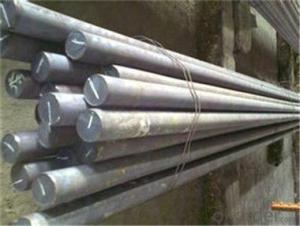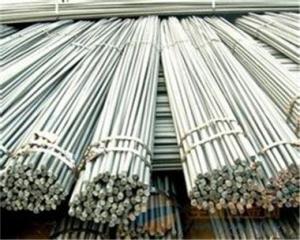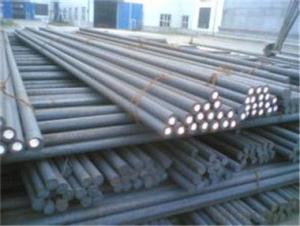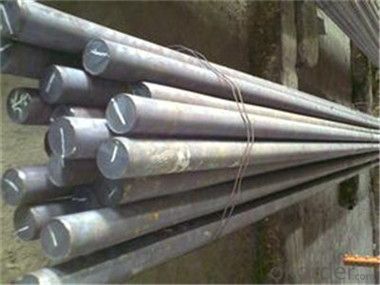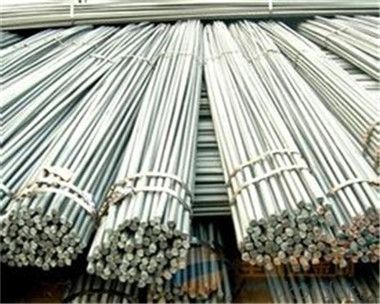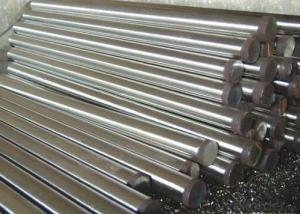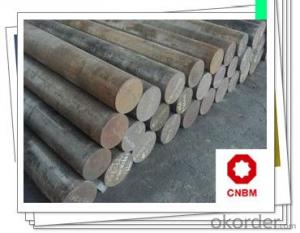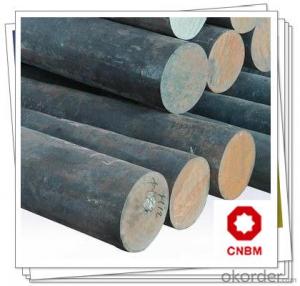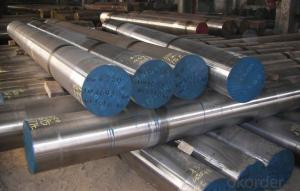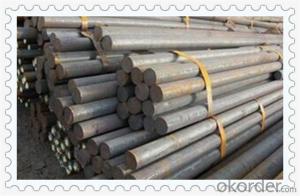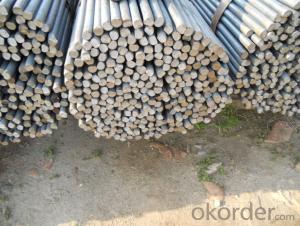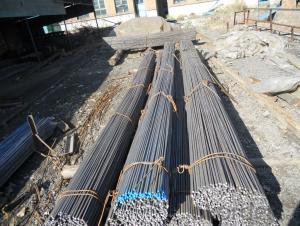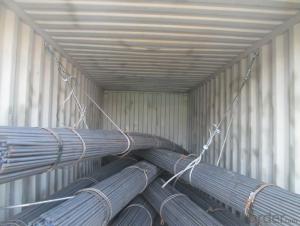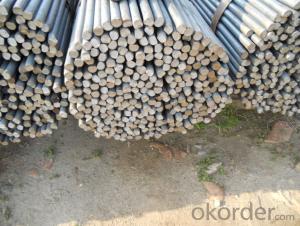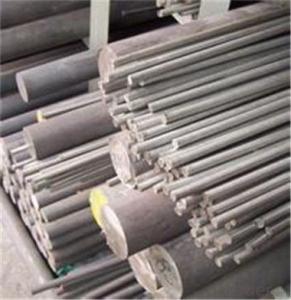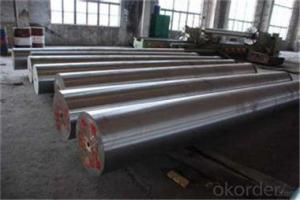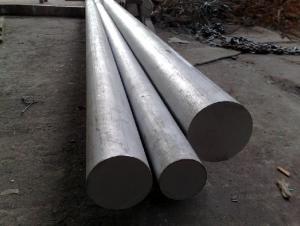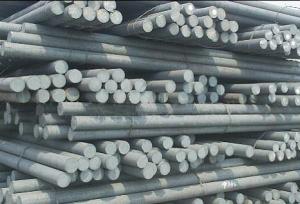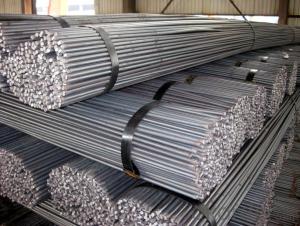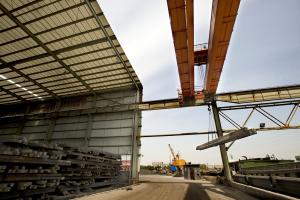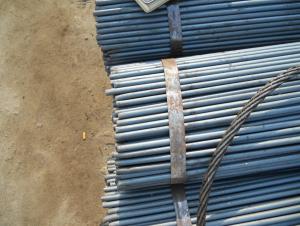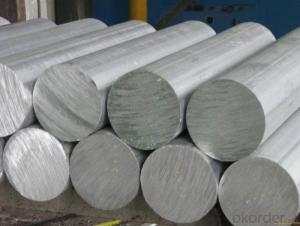Free Cutting Steel Round Bar with Good Quality in China
- Loading Port:
- Tianjin
- Payment Terms:
- TT OR LC
- Min Order Qty:
- 700 m.t.
- Supply Capability:
- 2000000 m.t./month
OKorder Service Pledge
OKorder Financial Service
You Might Also Like
Description of steel round bar:
Is used mainly for force for small size and finish requirement strict instruments and meters, watch parts, automobile, machine tool and other kinds of machines used, strict with dimension precision and smooth finish.
Festures of steel round bar:
4340 Forged Round Steel Bar
1.Dia 80-800mm Length:2000-13000mm or as required
2.Technique:Forged
3.Delivery Time:45 days
Specifications of steel round bar:
Description |
Carbon Steel Rod/Carbon Steel Bar,carbon steel rod,carbon steel shaft,mild steel bar, mild steel shaft,ms bar | |
Material | ASTM | 1005,1006,1008,1010,1015,1020,1025,1030,1035,1040,1045,1050,1055,1060,1065,1070,1080,1084, 1016,1022 |
DIN | Ck10,Ck15,Ck22,Ck25,Ck30,Ck35,Ck40,Ck45,Ck50, 30Mn4,40Mn4 | |
BS | 040A04,095M15,045M10,080A40,045M10,080M50 | |
Standard | GB/T799,ASTM A29,A108,A321,A575,BS970,DIN1652,JIS G4051 | |
Section shape |
Round | |
Length |
As your required | |
Application | Carbon steel rod applies to chemical industry, shipping industry, manufacturing industry,construction,decorate Industry,electric power, pump shafts, sanitary wares,furniture handles,boiler,high temperature resistant,low temperature resistant, corrosion resistant. | |
Images of steel round bar:
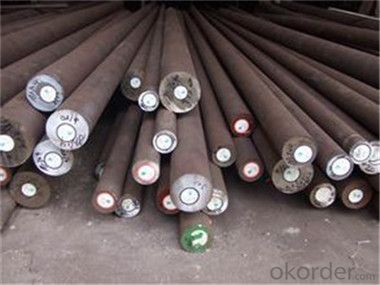
FAQ:
1. What is your package?
Packing situation: standard seaworthy packing or as customer required.
2. How long is the lead time?
Delivery time: 45 days after order confirmed.
3. What payment term do you accept?
Payment: T/T or L/C at sight.
- Q: Difference between forging and round steel
- A forging is a process in which a metal is heated and shaped by plastic deformation or a desired compressive force is applied. This force is typically achieved by using a hammer or pressure. The casting process constructed a fine grain structure and improved the physical properties of the metal. In the practical use of parts, a correct design allows the particles to flow in the direction of the main pressure.
- Q: What is the difference between a centerless ground and a rough turned steel round bar?
- The manufacturing processes and resulting surface finishes of a centerless ground steel round bar and a rough turned steel round bar differ. To produce a centerless ground steel round bar, the bar is fed through a grinding machine. This machine removes material from the surface, achieving precise diameter and roundness tolerances. The bar is rotated between two grinding wheels, while pressure is applied to remove imperfections and create a smooth, polished surface. The end result is a highly accurate and consistent diameter, with a mirror-like finish. This makes it suitable for applications that require tight tolerances and a polished appearance. On the other hand, a rough turned steel round bar is manufactured using a different machining process called turning. In this process, the bar is rotated against a cutting tool, which removes material from the surface to achieve the desired diameter and shape. However, turning does not provide the same level of precision and surface finish as centerless grinding. The resulting surface of a rough turned bar will have visible tool marks and a rougher texture compared to a centerless ground bar. In conclusion, the main distinction between a centerless ground steel round bar and a rough turned steel round bar lies in their manufacturing processes and resulting surface finishes. Centerless grinding offers a more precise diameter, roundness, and smoother surface finish, making it ideal for applications that require tight tolerances and a polished appearance. Rough turning, while less precise and with a rougher surface finish, is still suitable for applications that do not require the same level of precision or aesthetic appeal.
- Q: Can steel round bars be used for valve stem applications?
- Yes, steel round bars can be used for valve stem applications. Steel round bars are often used in various industrial applications, including valve stems, due to their strength, durability, and resistance to corrosion.
- Q: What are the different grades of carbon steel round bars for structural applications?
- The different grades of carbon steel round bars commonly used for structural applications include ASTM A36, ASTM A572, and ASTM A992.
- Q: What are the different surface defects that can occur in steel round bars?
- Steel round bars can experience various surface defects, which can be categorized based on their appearance and severity. Some common defects include: 1. Scale: During the manufacturing process, a thin layer of oxide, known as scale, can form on the steel's surface. It appears rough and flaky and can be easily removed mechanically. 2. Pits: Small depressions or craters, caused by corrosion or mechanical damage, can occur on the steel's surface. Pits weaken the steel's structural integrity and may require repair or replacement. 3. Scratches: Shallow grooves or cuts, resulting from handling, transportation, or machining, can be found on the steel's surface. While minor scratches may not impact performance, deep scratches can cause stress concentration and potential failure. 4. Roll marks: Raised or depressed lines or patterns, formed during the rolling process, can be seen on the steel's surface. Uneven pressure distribution between rolls causes these marks, affecting dimensional accuracy and surface quality. 5. Laminations: Thin layers or bands of non-metallic inclusions parallel to the steel's surface, caused by inadequate refining or improper casting techniques, are known as laminations. They reduce strength and toughness, requiring further processing or rejection. 6. Decarburization: The loss of carbon content on the steel's surface, occurring during heating, annealing, or hot working, is referred to as decarburization. It decreases hardness and strength, potentially leading to premature failure. 7. Surface cracks: Visible cracks on the steel's surface, caused by excessive cooling rates, improper heat treatment, or mechanical stress, are surface cracks. They compromise structural integrity and may necessitate repairs or rejection. These examples cover just a few of the possible surface defects in steel round bars. It is crucial to inspect and address these defects to ensure the steel's quality and performance in various applications.
- Q: Can steel round bars be used for making universal joints?
- Yes, steel round bars can be used for making universal joints. Steel round bars are commonly used in the manufacturing of universal joints due to their strength, durability, and ability to handle high torque and rotational forces.
- Q: What is the tolerance for length in steel round bars?
- The tolerance for length in steel round bars can vary based on specific manufacturing standards and requirements. Typically, the tolerance is defined as the maximum allowable deviation from the desired length and can be expressed as a percentage or specific measurement in millimeters or inches. Various international standards organizations, such as ASTM or ISO, may have their own guidelines for steel round bar tolerances. These standards ensure consistent and reliable measurements across the industry. In practice, tolerances for steel round bar length can range from tight tolerances of a few millimeters for precision applications to looser tolerances of several centimeters for general-purpose use. It is important to consider that the tolerance may also depend on the size and diameter of the bar. Smaller diameter bars may have tighter tolerances due to the challenges in manufacturing and accurately measuring longer lengths. Ultimately, the specific tolerance for steel round bar length should be determined based on the intended application and relevant industry standards or customer specifications.
- Q: How do you store excess steel round bars?
- In order to maintain the longevity of excess steel round bars and prevent any damage, it is imperative to adhere to specific guidelines. Here are several measures that can be implemented: 1. It is essential to thoroughly clean and examine the steel round bars prior to storage. Remove all traces of dirt, grease, or moisture from the surface to hinder corrosion. 2. Opt for an appropriate storage location. Ideally, select a well-ventilated, dry area with stable temperatures. Avoid areas that are susceptible to moisture, extreme heat, or direct sunlight when storing the bars. 3. Implement the use of racks or pallets for bar storage. Arrange them horizontally, one on top of the other, ensuring there is ample space between each layer to prevent any deformation or bending. 4. If the bars are to be stored outdoors, ensure they are covered with a waterproof tarp or a protective coating to safeguard against rain, snow, and other elements. 5. Refrain from placing excessive weight on top of the bars to prevent deformation. Additionally, exercise caution regarding any sharp objects or edges in close proximity that could potentially cause damage. 6. Regularly inspect the stored bars to detect any signs of corrosion, rust, or other damage. If any issues are identified, promptly address them by taking the necessary measures. It is crucial to bear in mind that proper storage is paramount to preserve the quality and integrity of the steel round bars. By adhering to these guidelines, one can ensure that the excess steel round bars remain in optimal condition until they are required for future use.
- Q: What is the difference between a smooth and a precision ground steel round bar?
- A smooth steel round bar has a surface that is free from any roughness or irregularities, providing a polished and sleek appearance. On the other hand, a precision ground steel round bar undergoes a specialized grinding process to achieve tight tolerances and a high degree of accuracy in its dimensions. This precision grinding ensures that the bar has consistent diameter and smoothness throughout its length, making it suitable for applications that require precise measurements and tight fits.
- Q: Are steel round bars available in metric sizes?
- Yes, steel round bars are available in metric sizes.
Send your message to us
Free Cutting Steel Round Bar with Good Quality in China
- Loading Port:
- Tianjin
- Payment Terms:
- TT OR LC
- Min Order Qty:
- 700 m.t.
- Supply Capability:
- 2000000 m.t./month
OKorder Service Pledge
OKorder Financial Service
Similar products
Hot products
Hot Searches
Related keywords
